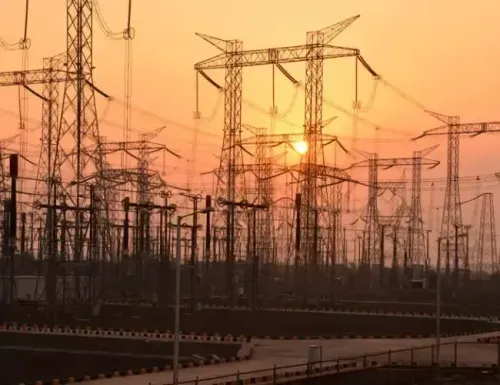NDMC to Install Mist Sprayers on Electric Poles Along Lodhi Road in Delhi

New Delhi, Dec 16 (NationPress) The NDMC has made a commitment to equip 15 mist sprayers on electric poles along a 500-metre stretch of Lodhi Road to tackle increasing air pollution levels, according to Vice Chairperson Kuljeet Singh Chahal on Monday.
Each pole will be outfitted with five nozzles, and each nozzle will consist of six spray holes, culminating in 30 spray points per pole. This system will utilize 81 liters of water per pole for every hour it operates. To facilitate this, four tanks, each with a 5,000-liter capacity, will be installed, exclusively using treated water sourced from sewage treatment plants (STP), he said.
Chahal also mentioned that following a successful rollout on Lodhi Road, the initiative will extend to critical areas such as Shanti Path and Africa Avenue, and will ultimately be implemented across the entire NDMC jurisdiction.
He emphasized that the NDMC has already initiated various measures aimed at combating pollution. Mechanical Road Sweepers (MRS), equipped with GPS tracking, have been deployed for efficient road cleaning, monitored in real-time through the Smart City Integrated Command and Control Centre.
The council has also acquired anti-smog guns and mist spray machines to effectively mitigate dust and particulate matter as necessary. Water tankers, with capacities ranging from 5,000 to 10,000 liters, are employed for irrigating roadside trees and plants, utilizing treated water from STPs, he noted.
In addition, the NDMC conducts tree plantation drives to foster greenery and ensure consistent irrigation of roadside green areas. Stringent dust control protocols are enforced at construction sites. All these initiatives align with Prime Minister Narendra Modi’s vision of achieving a pollution-free India.
The NDMC stands out as one of the few civic bodies in the nation with a budget surplus. An area of approximately 28 sq km within the total jurisdiction of 42.74 sq km of the NDMC is occupied by the planned city of ‘Lutyens New Delhi’.
This represents the historic imperial Delhi, established as the capital in 1911.
Within this area, around 22.3 sq km is categorized as the Lutyens Bungalow Zone, which has strict regulations to limit building heights and preserve the heritage character of existing structures.
The NDMC jurisdiction encompasses government offices, housing for government employees, private residences, the city’s Central Business District, and key institutional spaces. The region is characterized by its broad roads, parks, and gardens.









